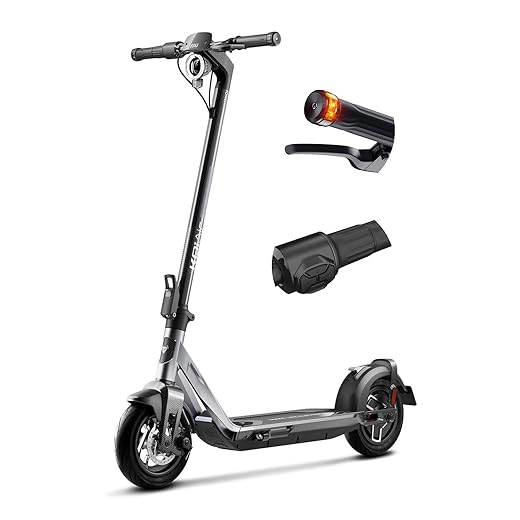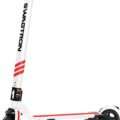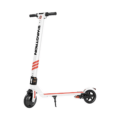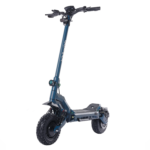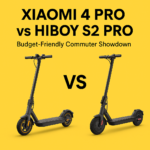- Home
- Scooters
- Compare Scooters
- NIU KQi Air vs Segway Ninebot MAX G2: Which Premium Commuter Scooter Is Better for You?
NIU KQi Air vs Segway Ninebot MAX G2: Which Premium Commuter Scooter Is Better for You?
Key Takeaways
- The article compares the NIU KQi Air and Segway Ninebot MAX G2, highlighting their fundamental differences in design and purpose.
- NIU KQi Air targets light, easy portability and smart features, while Segway Ninebot MAX G2 focuses on sturdiness and comfort over long distances.
- KQi Air is ideal for those who use public transport and prefer a nimble ride, whereas MAX G2 suits daily commuters needing power for hills and rough roads.
- Both scooters offer solid safety features but differ in smart capabilities; KQi Air excels in security options like NFC, while MAX G2 provides a mature tracking app.
- The final verdict suggests choosing KQi Air for lightness and urban commuting, and MAX G2 for stability and handling during longer, tougher rides.
Table of contents
- Brand and Model Overview
- Design, Build Quality, and Portability
- Motor Power, Speed, and Hill Performance
- Battery, Range, and Efficiency
- Ride Comfort and Handling
- Braking and Safety
- Smart Features and App Experience
- Durability, IP Rating, and Maintenance
- Warranty, Support, and Availability
- Value for Money and Rider Profiles
- Final Verdict
NIU KQi Air and Segway Ninebot MAX G2 live in the same premium commuter space. Still, they feel like two very different answers to the same problem. One is light, sharp, easy to carry, and loaded with smart features. The other feels sturdy, calm, and ready to eat long, rough commutes without drama.
If you try to choose between them only by numbers, the decision feels messy. So this guide walks through how they behave in real life. You will see how they stack up on weight, power, range, comfort, safety, smart features, and who each one actually fits.
Brand and Model Overview
NIU KQi Air
NIU comes from the smart moped world, and you can feel that mindset in the KQi Air. It looks compact and clean, yet it does not feel like a toy.
Key things:
- Carbon fiber and magnesium frame.
- Very low weight, under 12 kg.
- 48 V setup for lively response.
- Turn signals, bright lights, NFC, and app control.
So KQi Air makes sense for riders who want a real commuter scooter that still feels easy to lift, fold, and live with every day.
Segway Ninebot MAX G2
Segway’s MAX line already had a strong name. MAX G2 takes that base and makes it more grown up.
Key things:
- Solid, wide deck and big frame.
- More powerful rear motor.
- Front and rear suspension.
- Larger battery for longer rides.
- Turn signals, traction control, and a polished app.
So MAX G2 aims at people who treat the scooter less like a gadget and more like a small daily vehicle.
Design, Build Quality, and Portability
NIU KQi Air
KQi Air looks simple in a good way. Clean lines. Tight panels. Hidden cables. The finish feels closer to premium hardware than rental fleet gear.
The folding latch feels clear and quick. Once folded, the scooter stays slim and short. It slides next to a desk, behind a door, near a café table, or in a trunk without fuss.
The low weight changes the routine:
- Carrying it upstairs does not feel like a workout.
- Short walks through stations or offices feel natural.
- Tight indoor corners feel easy.
Plus, the light chassis makes slow speed handling smooth in crowded spots. You can roll, pivot, and park without feeling clumsy.
Segway Ninebot MAX G2
MAX G2 stands tall and serious. The stem is thick. The deck is big. Suspension parts and big tires fill space. It looks like it means business.
The folding joint works well, and the scooter folds in a straightforward way. Then the weight reminds you this is not a grab and go feather. Lifting it into a car or over a step is fine. Carrying it up several floors many times per week feels rough for most riders.
Build quality feels strong. Nothing feels hollow. Parts sit snug, and the scooter gives a dense, durable impression.
Design and Portability Verdict
If you often carry the scooter, pick NIU KQi Air. It respects your back and your hallway.
If you rarely carry it and prefer a larger, more planted feel, pick MAX G2. It acts more like a compact electric vehicle than a fold and forget toy.
Motor Power, Speed, and Hill Performance
NIU KQi Air
KQi Air pairs its light body with a responsive rear motor on a 48 V system. That combo makes it feel quicker than its numbers suggest.
In daily riding:
- It gets up to normal city speeds fast.
- It keeps a steady pace on flat ground.
- It handles short and medium hills for average riders without feeling weak.
- Throttle response feels smooth and easy to control.
So you get a fun, awake feel without harsh surges. For city use, it feels honest and strong for its weight.
Segway Ninebot MAX G2
MAX G2 has a more powerful motor with higher peak output. You feel that from the first few meters.
In daily riding:
- It has better punch off the line.
- It holds stronger speeds, where allowed.
- It carries heavier riders with less effort.
- It climbs longer and steeper hills with more confidence.
- Traction control helps keep grip when the road is dusty or wet.
So MAX G2 suits riders who face real elevation changes or want extra headroom for load and speed.
Performance Verdict
Pick KQi Air if your routes stay mostly flat or gently rolling and you like a light scooter that still feels quick.
Pick MAX G2 if you need more power for hills, higher body weight, or long open sections where extra pull feels safer.
Battery, Range, and Efficiency
NIU KQi Air
KQi Air balances its battery size with low weight in a smart way.
You get:
- A 48 V pack that holds performance deeper into the charge.
- Real world range that covers many commutes in the 15 to 30 km band.
- Practical charging time for home or office use.
- A scooter that does not feel sluggish too early in the day.
So you carry less battery mass yet still cover normal urban mileage with comfort.
Segway Ninebot MAX G2
MAX G2 brings a bigger battery for longer and harder use.
You get:
- Noticeably longer range.
- Comfort for full day rides or long round trips.
- More buffer when you ride fast, face wind, or ride in cold weather.
- Extra support for heavy riders who would drain smaller packs faster.
Next, the integrated charging setup keeps the routine simple. Plug in, walk away, start fresh.
Range and Efficiency Verdict
Choose KQi Air if range per kilogram matters more than raw distance, and your daily use sits in the small to medium zone.
Choose MAX G2 if you stack many kilometers, ride faster, or want to forget about range stress most days.
Ride Comfort and Handling
NIU KQi Air
KQi Air has no suspension, yet it does not feel sketchy when used on the right surfaces.
You get:
- Wide bar for leverage.
- Stable deck size for a natural stance.
- Air filled tires that soften typical joints and minor cracks.
- Predictable steering up to its top speeds.
On smooth paths it feels light, direct, and satisfying. On broken roads you feel more hits, so you start to pick your line, slow a bit, and ride smart. For many downtown areas with decent pavement, it feels like a good fit.
Segway Ninebot MAX G2
MAX G2 leans into comfort.
You get:
- Front hydraulic and rear spring suspension.
- Larger, self sealing tires.
- Longer wheelbase.
- Heavier body that calms vibration.
That mix smooths speed bumps, patched asphalt, and random rough spots. At higher speeds, the scooter feels relaxed and steady. Long rides feel easier on your legs and wrists.
Comfort and Handling Verdict
Pick KQi Air if your roads look decent and you enjoy a light, nimble feel.
Pick MAX G2 if you ride long, hit rough surfaces often, or just want the softest and most planted ride in this matchup.
Braking and Safety
NIU KQi Air
KQi Air backs its speed with a solid safety setup.
You usually get:
- A strong front mechanical brake.
- Rear electronic braking support.
- Bright front light.
- Rear light that reacts on braking.
- Turn signals.
- A stable deck with good grip.
Stopping power matches the scooter’s weight and speed well. It feels controlled, not vague. The lights and signals help other road users read your moves.
Segway Ninebot MAX G2
MAX G2 pushes safety further, in line with its role as a bigger commuter.
You usually get:
- Front drum brake plus rear electronic brake.
- Bright lighting front and rear.
- Turn signals on both ends.
- Traction control to cut wheel slip.
- Strong contact patch from big tires.
The drum brake stays consistent in wet weather and needs less service. With suspension and mass, the scooter stays planted during hard stops.
Braking and Safety Verdict
Both scooters take safety seriously.
Pick KQi Air if you want a light scooter that still checks all key safety boxes.
Pick MAX G2 if you ride faster, ride in the rain, or want traction control and suspension support when you brake hard.
Smart Features and App Experience
NIU KQi Air
KQi Air brings a strong connected experience.
Common features include:
- NFC unlock.
- App lock and alarm.
- Ride data and logs.
- Mode, speed, and regen tuning.
- Firmware updates.
So security and control feel built in, not bolted on. For a scooter this light, the alarm and lock tools help a lot.
Segway Ninebot MAX G2
MAX G2 relies on a mature app many riders already know.
Common features include:
- Mode selection and custom tuning.
- Cruise control settings.
- Light and behavior controls.
- Health checks.
- Updates.
- Support for tracking through supported platforms on some versions.
The interface stays simple and stable, so riders can set it once and ride.
Smart Features Verdict
Pick KQi Air if NFC, alarm features, and detailed tuning in a light scooter sound appealing.
Pick MAX G2 if you want straightforward controls, wide support, and tracking tools that match a scooter often parked outside or in shared racks.
Durability, IP Rating, and Maintenance
NIU KQi Air
KQi Air feels like a quality product, yet its low mass still rewards careful use.
Key notes:
- Protection rating supports light rain and splashes.
- Clean cable routing reduces snag risk.
- Hardware quality is good when checked and tightened on schedule.
So if you avoid harsh impacts, bad potholes at full speed, and deep water, it holds up well as a daily commuter.
Segway Ninebot MAX G2
MAX G2 leans into heavy duty use.
Key notes:
- Strong frame and fork.
- Water resistance suited to wet commutes.
- Drum brake that cuts down on service.
- Self sealing tires that reduce flat risk.
So it works for riders who ride often, ride in many conditions, and expect the scooter to take hits now and then.
Durability Verdict
Choose KQi Air if you want a light but serious build and treat your gear with some care.
Choose MAX G2 if you expect long term, high mileage use, rough patches, and wet days baked into your routine.
Warranty, Support, and Availability
Both brands back their products with formal warranty and service structures, with details that vary by region.
NIU:
- Active in many major markets.
- Digital first brand style with strong app and update support.
Segway Ninebot:
- Wide global footprint.
- Long experience with the MAX line.
- Good access to parts and community knowledge.
So in many regions, Segway offers an easier path to local support. In key cities, NIU coverage feels strong too. It makes sense to check local service points, response times, and exact warranty terms before you buy either one.
Value for Money and Rider Profiles
NIU KQi Air: Who It Fits
Go for the KQi Air if:
- You carry your scooter on stairs or into buildings.
- You split your trip between scooter, train, tram, or metro.
- You ride mainly on decent pavement.
- Your round trip sits in a moderate distance range.
- You like smart security such as NFC and alarm baked into the product.
So each day you feel the low weight, and you do not feel like you gave up real performance to get it.
Segway Ninebot MAX G2: Who It Fits
Go for the MAX G2 if:
- You use your scooter as main daily transport.
- You ride long distances or many short trips that add up.
- You are a heavier rider or carry a backpack often.
- Your streets include hills, cracks, or old pavement.
- You want suspension, traction control, and a calm, stable feel.
So each ride feels smooth, planted, and ready, even when the route or weather is not kind.
Quick Snapshot
- Weight: KQi Air is much lighter.
- Range: MAX G2 reaches farther per charge.
- Comfort: MAX G2 wins with suspension and mass.
- Portability: KQi Air wins by a wide margin.
- Smart and security: KQi Air strong on NFC and alarm. MAX G2 strong on tracking and ecosystem.
- Role: KQi Air fits flexible city movers. MAX G2 fits riders who want a tough daily workhorse.
Final Verdict
Both scooters are strong choices. The better one depends on how your days look, not just on spec numbers.
Pick NIU KQi Air if you feel every extra kilo, move through buildings, and want a light scooter that still rides like proper commuter gear.
Pick Segway Ninebot MAX G2 if you ride far, ride often, face rough roads or hills, and want comfort and stability to stay high even when the trip is long.
Once you match the scooter to your real routine, the decision becomes simple.
 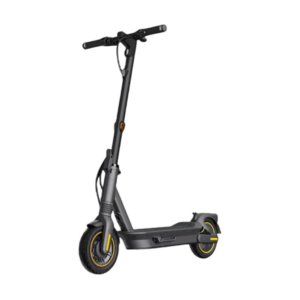 | |
| Price | |
| Our Rating | |
| Brand | NIUSegway |
| Category | Electric ScootersElectric Scooters |
General
| Model The Model specifies the exact version or name of the scooter. It helps identify its unique design, features, and specifications within the manufacturer’s product line. Knowing the model makes it easier to compare options, find compatible accessories, or look up support information. | KQi AirNinebot MAX G2 |
| Brand The Brand identifies the manufacturer or company that designs and produces the scooter. A trusted brand is a sign of quality, reliability, and good customer support. Well-known brands often have higher standards for safety, performance, and after-sales service, giving you more confidence in your purchase. | NIUSegway |
| Release Date The Release Date indicates when the scooter model was officially launched on the market. This helps you know how current the design, technology, and features are. A newer release date often means updated components, improved performance, and the latest safety or smart features. | 01 January 202301 January 2023 |
| Recommended Age Recommended Age indicates the minimum age range that the scooter is designed for, based on safety, size, and ease of use. Following the recommended age helps ensure that riders can handle the scooter’s speed, weight, and controls comfortably and safely. Always check local laws and use protective gear, especially for younger riders. | 14+ years14+ |
Performance & Power
| Motor Power (Wattage) What it means: The motor power, measured in watts (W), shows how strong the scooter’s electric motor is. Why it matters: Higher wattage usually means better acceleration, more torque, and improved performance on hills or rough terrain. For example, a 250W motor is good for flat city roads and light riders, while a 500W or 1000W motor provides more power for faster speeds or climbing steep inclines. | 350 W rated, up to 700 W peak450 W nominal, 900–1000 W peak |
| Top Speed The Top Speed indicates the maximum speed that the scooter can reach under optimal conditions. It’s usually measured on level ground with a fully charged battery and an average rider weight. A higher top speed allows you to travel longer distances faster, but always ensure you ride within legal speed limits and your personal comfort zone for safety. | Up to ~32 km/h (20 mph)Up to 22 mph (25 km/h) |
| Battery Capacity Battery Capacity refers to the total amount of energy the scooter’s battery can store, usually measured in ampere-hours (Ah) or watt-hours (Wh). A higher battery capacity means you can ride longer distances on a single charge, reducing the need for frequent recharging. Keep in mind that actual range can vary depending on rider weight, terrain, speed, and weather conditions. | 451.2 Wh (48 V, 9.4 Ah)36 V, 15.3 Ah (551 Wh) |
| Estimated Range per Charge The Estimated Range per Charge indicates the average distance the scooter can travel on a single full battery charge. This range is calculated under optimal conditions, such as flat terrain, moderate speed, and average rider weight. Real-world range may vary depending on riding style, terrain, weather, and load. A longer range means fewer recharges and greater freedom for longer trips. | ~50 km (31 mi) claimed; real‑world ~24 kmUp to 43 miles (70 km theoretical, ~25 miles at max speed) |
| Hill Climb Ability Hill Climb Ability describes the maximum incline or slope that the scooter can handle while maintaining stable performance. It’s typically expressed as a percentage or in degrees. A higher hill climb rating means the scooter can tackle steeper hills without losing too much speed or power. Actual climbing performance may vary based on rider weight, battery charge, and terrain conditions. | Up to ~20% inclineUp to 22% incline |
| Drive System The Drive System refers to how power from the motor is delivered to the wheels. Electric scooters typically use either a hub motor (directly integrated into the wheel) or a chain/belt drive system. A high-quality drive system ensures smooth acceleration, efficient power transfer, and low maintenance. The choice of drive system affects performance, noise level, and overall ride experience. | Rear-wheel hub motorRear-wheel hub motor |
Charging & Electrical
| Charging Time Charging Time indicates how long it takes to fully recharge the scooter’s battery from empty to 100% using the standard charger provided. Faster charging means less downtime and more time on the road. Actual charging time may vary slightly depending on battery capacity, charger output, and environmental conditions. | Around 5 hoursApprox. 5–6 hours |
| Battery Type Battery Type refers to the specific technology used in the scooter’s battery, which affects performance, lifespan, weight, and charging time. Most modern electric scooters use high-quality lithium-ion (Li-ion) batteries because they offer a good balance of energy density, durability, and low maintenance. A reliable battery type ensures consistent power delivery and longer riding ranges. | NIU Energy lithium‑ion (48 V, 21700 cells)Lithium-ion with smart BMS |
| Removable Battery A Removable Battery means the battery pack can be easily detached from the scooter for convenient charging and replacement. This feature allows you to charge the battery separately, swap it with a spare for extended range, or securely store it indoors in extreme weather. Removable batteries add flexibility and make it easier to keep your scooter powered up wherever you are. | NoNo |
| Regenerative Braking Regenerative Braking is an energy-saving feature that converts some of the energy normally lost during braking back into battery power. When you slow down or brake, the motor works in reverse to generate electricity, which helps extend the scooter’s range and improves overall efficiency. This system also reduces wear on traditional brake components, leading to lower maintenance over time. | YesYes |
| Lighting Lighting refers to the built-in front and rear lights that enhance visibility and safety when riding in low-light conditions or at night. Good lighting helps you see the road ahead and ensures that other road users can see you. Many scooters include LED headlights, taillights, and sometimes brake lights or side reflectors for added safety and compliance with local traffic regulations. | Front “Halo” LED, rear brake light, turn signals, ambient side lights, electric hornFront LED headlight, rear LED taillight, integrated turn signals |
Build & Dimensions
| Scooter Weight Scooter Weight refers to the total weight of the scooter when fully assembled, including the battery. This affects how easy it is to carry, lift, and store the scooter when not in use. A lighter scooter is more portable and convenient for commuting, especially if you need to carry it upstairs or onto public transport. Keep in mind that a sturdy frame and quality components may add to the weight but also contribute to better durability and ride stability. | Approximately 11.9 kg (26.2 lb)Approx. 53.5 lb (24.3 kg) |
| Maximum Rider Weight Maximum Rider Weight indicates the highest rider weight that the scooter is designed to safely support while maintaining optimal performance and stability. Staying within this limit helps ensure reliable acceleration, braking, and climbing ability, and it protects the frame, suspension, and motor from excessive strain. Exceeding the recommended limit may reduce performance and increase wear on components. | Up to 120 kg (264 lb)265 lb (120 kg) |
| Deck Size Deck Size refers to the dimensions of the scooter’s standing platform. A wider and longer deck provides more foot space, allowing you to stand comfortably and adjust your stance while riding. A well-sized deck improves balance and stability, especially on longer rides or at higher speeds. Compact decks, on the other hand, help keep the scooter lightweight and portable. | Wide carbon-fiber deck (~7.5″ / 19 cm)180 mm wide footboard, non-slip finish |
| Handlebar Height Handlebar Height refers to the distance from the deck to the handlebars, which affects your riding posture and comfort. An appropriate handlebar height helps you maintain good balance, reduces strain on your back and arms, and makes steering more comfortable. Some scooters have adjustable handlebars to fit riders of different heights, while others have a fixed height for a streamlined design. | Fixed, wide (~54 cm) for ergonomic controlApprox. 40.9″ from deck |
| Folding Mechanism The Folding Mechanism describes how easily and securely the scooter can be folded for carrying and storage. A well-designed folding system lets you quickly collapse the scooter into a compact size, making it convenient to transport on public transit, store under a desk, or fit into a car trunk. Look for sturdy latches and safety locks to ensure the scooter stays firmly in place when folded or unfolded. | YesYes |
| Dimensions Folded Dimensions indicate the size of the scooter when it’s fully folded. This measurement shows how much space the scooter will take up when stored or carried, making it easier to check if it will fit in your car trunk, under a desk, or in a closet. Compact folded dimensions are ideal for commuters who need to bring their scooter on public transport or store it in tight spaces. | Ultra‑compact with flat-fold handlebars (~48 cm)1210 × 570 × 605 mm |
| Material Material refers to the primary construction materials used for the scooter’s frame and key components. High-quality materials like aircraft-grade aluminum, reinforced steel, or durable composites provide strength, stability, and a lighter overall weight. A sturdy material ensures the scooter can handle daily wear and tear while maintaining safety and performance. | Carbon fiber (70%) and magnesium alloy chassisHigh‑strength steel frame |
Safety & Control
| Brake Type(s) Brake Type(s) describe the braking systems the scooter uses to help you slow down or stop safely. Common brake types include mechanical brakes (like drum or disc brakes), electronic brakes, and foot brakes. Many scooters combine multiple braking systems for added safety and shorter stopping distances. The type and quality of brakes affect your control, especially when riding at higher speeds or on slopes. | Front mechanical disc brake + rear regenerative brakeFront drum brake + rear electronic brake (E‑ABS) |
| Suspension Suspension refers to the system that absorbs shocks and vibrations while riding, providing a smoother and more comfortable ride over uneven or rough surfaces. Scooters may have front suspension, rear suspension, or dual suspension for better shock absorption and stability. Good suspension helps reduce rider fatigue and improves control, especially when riding on bumpy roads or off-road paths. | None—relies on tire and frame comfort designHydraulic front suspension and rear dual spring suspension |
| Tire Type Tire Type refers to the kind of tires the scooter uses, which directly affects ride comfort, traction, and maintenance. Common types include solid (airless) tires, pneumatic (air-filled) tires, or hybrid options. Pneumatic tires offer better shock absorption and a smoother ride on rough surfaces, while solid tires are puncture-proof and require less upkeep. The right tire type helps ensure safe handling and a comfortable ride in different conditions. | 9.5″ tubeless pneumatic puncture‑resistant10″ self-sealing tubeless pneumatic tires with jelly layer |
| Tire Size Tire Size indicates the diameter and width of the scooter’s tires, which affect ride comfort, stability, and how well the scooter handles different terrains. Larger tires generally offer better shock absorption and a smoother ride over bumps and rough surfaces, while smaller tires keep the scooter lighter and more portable. Choosing the right tire size helps ensure a balance between agility and comfort. | 9.5″ × 2.3″ (241 × 58 mm) front & rear10 inches front & rear |
| Kickstand The Kickstand is a built-in stand that allows you to park your scooter upright when it’s not in use. A sturdy kickstand keeps the scooter stable and prevents it from tipping over, protecting it from scratches and damage. It also makes storing and accessing your scooter more convenient, whether you’re at home, work, or on the go. | YesYes |
| Water Resistance Rating Water Resistance Rating indicates how well the scooter is protected against water and moisture, usually shown as an IP (Ingress Protection) rating. This rating helps you understand whether the scooter can handle light rain, splashes, or wet roads without damage. While most scooters are not fully waterproof, a good water resistance rating adds peace of mind when riding in changing weather conditions. Always avoid deep puddles or submerging the scooter to protect its electrical components. | IP55 (splash and dust resistant)IPX5 for scooter body; IPX7 battery pack |
Features & Extras
| Display/Console The Display (or Console) shows important real-time information about your ride, helping you monitor your scooter’s status at a glance. Typical displays show speed, battery level, distance traveled, and riding mode. Some models also include additional features like Bluetooth connectivity, app integration, or backlighting for better visibility at night. A clear and easy-to-read display enhances safety and convenience on every trip. | Integrated LED dashboard shows speed, mode, and battery statusFull-color LED dashboard (speed, battery, modes, turn indicator, connectivity) |
| Ride Modes Ride Modes refer to the different speed and power settings you can choose to match your riding style or road conditions. Common modes include eco for maximum range and energy efficiency, standard for everyday balance, and sport or turbo for higher speed and stronger acceleration. Switching between ride modes allows you to customize performance, conserve battery, and ride safely in various environments. | Adventure modes: E‑Save, Sport, Pedestrian, Dynamic, Cruise Control, plus Custom via appEco, Drive, Sport, S+; plus Walk & Park modes |
| Smart App Connectivity Smart App Connectivity lets you pair your scooter with a dedicated mobile app via Bluetooth. Using the app, you can monitor real-time ride stats like speed, battery level, and range, adjust settings such as ride modes or cruise control, lock the scooter for added security, and sometimes receive firmware updates. This feature adds convenience and allows you to personalize your riding experience right from your smartphone. | YesYes |
| Anti-Theft System The Anti-Theft System helps protect your scooter from unauthorized use or theft. This feature can include built-in alarms, electronic motor locks, GPS tracking, or remote locking through a mobile app. A good anti-theft system provides peace of mind when parking your scooter in public spaces, adding an extra layer of security to safeguard your investment. | NFC card unlock, app lock, built-in GPS alarm (estimated from features list)App‑activated horn alarm, Find My feature |
| Cruise Control Cruise Control allows you to maintain a steady speed without continuously holding the throttle. This feature makes longer rides more comfortable by reducing hand fatigue and providing a smoother, more relaxed riding experience — especially on flat, open roads or bike lanes. For safety, cruise control can usually be easily activated or deactivated while riding. | YesYes |
| Accessories Included Accessories Included lists the additional items that come with the scooter to enhance your riding experience and convenience. Common accessories may include a charger, kickstand, bell, lights, phone holder, or carrying strap. These extras add value by making your scooter safer, easier to use, and ready to ride straight out of the box. | Electric horn, reflectors, charger, user manualPress-bell, app connectivity, reflectors, charger, user manual |
Warranty & Compliance
| Warranty Period The Warranty Period indicates how long the manufacturer guarantees the scooter against defects in materials and workmanship under normal use. A good warranty provides peace of mind, showing the brand’s confidence in its product quality. Always check what parts are covered, such as the frame, battery, and motor, and follow the maintenance guidelines to keep your warranty valid. | Typically 24 monthsTypically 24 months |
| Certifications Certifications confirm that the scooter meets specific safety, quality, and environmental standards set by recognized organizations or regulatory bodies. Common certifications may include CE, RoHS, UL, or other local compliance marks, depending on your region. These certifications ensure that the scooter is manufactured to high standards and is safe and legal to use in your country. | UL‑2272, CE, IP55 compliant, meets US/EU standardsUL 2272 certified by TÜV Rheinland; E-MARK reflectors compliant with EU standards |
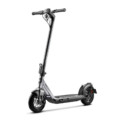  |


